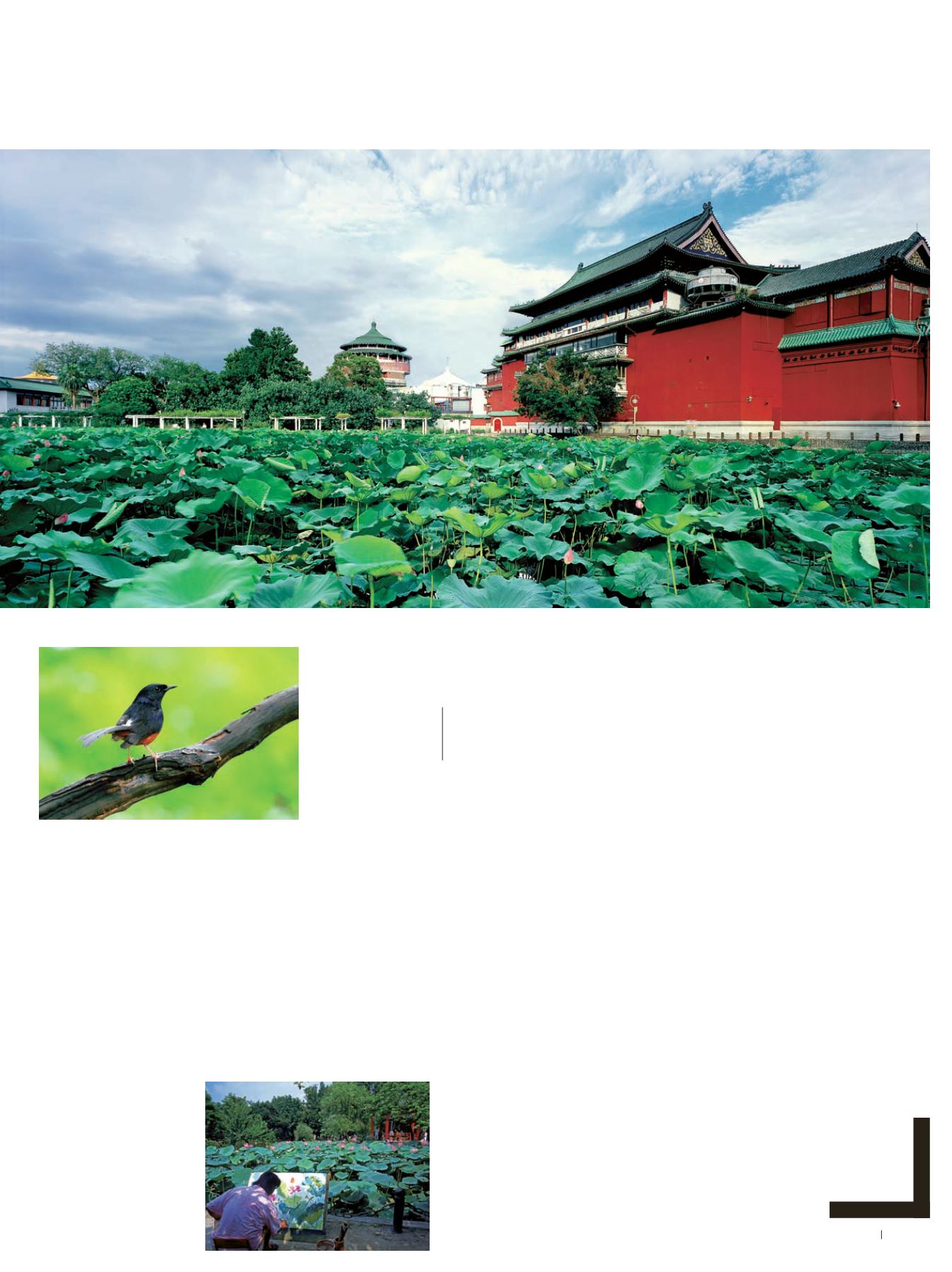
An oasis of calm within the city, Taipei Botani-
cal Garden attracts nature lovers, photogra-
phers, and artists.
᎑᎑Йͭί̨̏ɓඣ̨ٙ̏ಔ
ي
dҗֽ̹۬
ʕٙၠ
ݲ
dіˏεІ್ฌλ٫eᙲᅂࢪၾᖵ
ஔՑԸf
Taipei Botanical Garden has been a research center since 1896,
and a place where the public can immerse themselves in nature
since 1921. As Taiwan’s capital has grown outward and upward,
this 8.2-hectare enclave has held fast as a biodiversity hotspot.
The garden is divided into almost 30 themed zones, and
several of the categories will not surprise those who know
something about plants and trees. One zone is given over to
aquatic plants, another to gymnosperms (whose seeds are not
enclosed in fruit), and a third to palmae (palm trees).
More unusual is the collection of trees, flowers, and herbs
mentioned in great works of Chinese literature. Because the
Chinese language abounds in homophones, writers have often
used plants as emblems. For example, the willow tree (
ݣ
,
liu
) is
a symbol of wanting a person to stay (
व
, also
liu
). Another
section displays plants associated with the 12 animals of the
Chinese zodiac.
The garden’s avians have become used to humans. On
weekends, Taiwan’s bird-photography fraternity is out in force,
snapping closeups of the resident Malayan night herons, Japanese
white-eyes, white-breasted waterhens, and other feathered
treasures.
Taipei Botanical Garden can be reached by the capital’s
mass rapid transit (MRT) rail system, the nearest station being
Xiaonanmen. Getting to northern Taiwan’s other botanical garden
is, unfortunately, far more difficult.
Taipei
̨
̏
39
enVoyage


